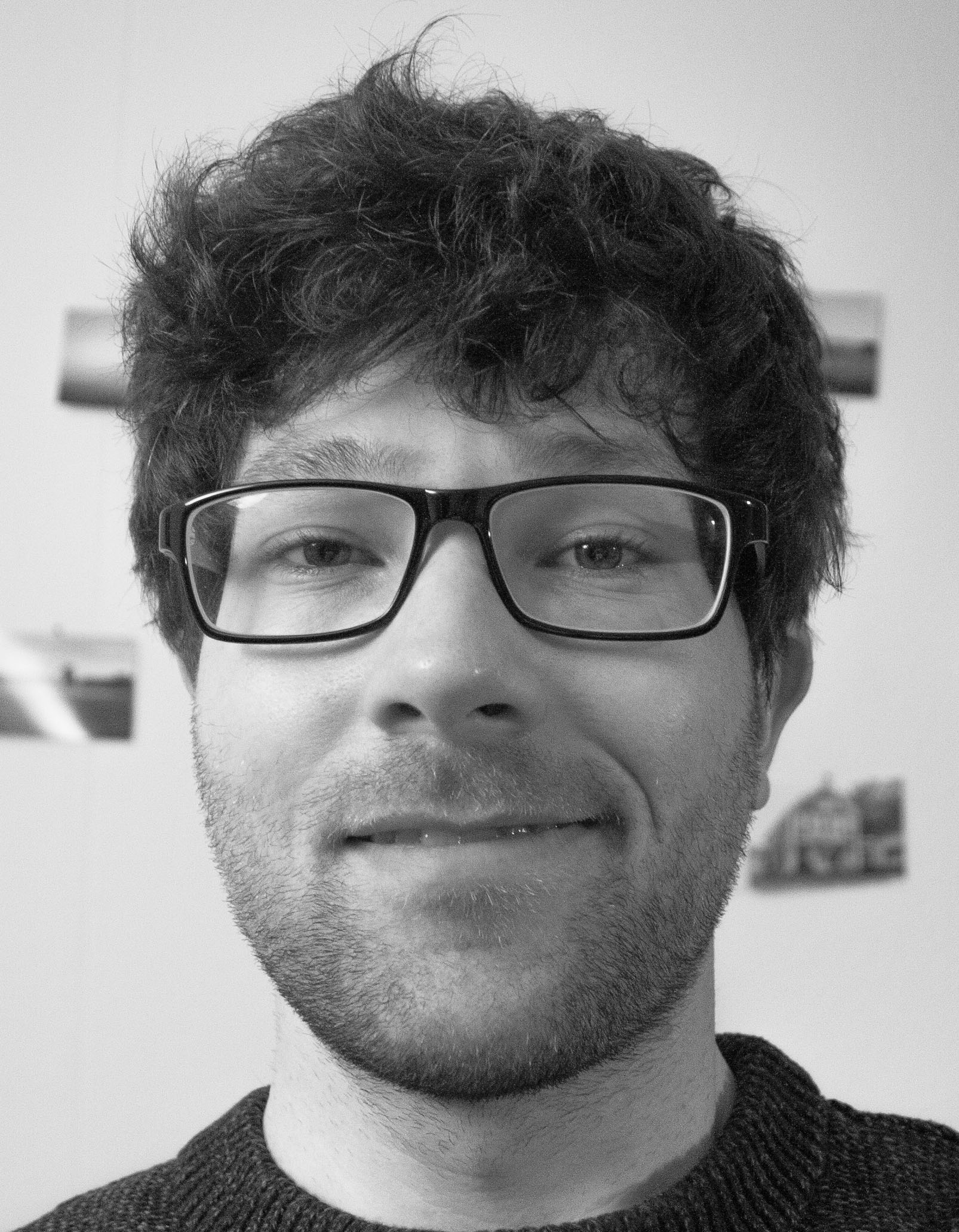University of Zimbabwe
Karen Ingram
Karen Ingram is a creative director, designer and artist who uses her skill set to promote scientific awareness. She has a keen interest in the field of synthetic biology. Karen co-authored “Biobuilder: Synthetic Biology in the Lab” (O’Reilly, 2015), a synthetic biology curriculum in which she crafted visual elements and teaching aides. As a Synthetic Biology LEAP Fellow, Karen is recognized as an emerging leader in synthetic biology.
She is a long-time planning committee member of SXSW Interactive, where she focuses on topics such as the overlap of science and art, emerging biotechnologies, and their effects on society. Since 2012, she has co-organized Brooklyn-based science cabaret The Empiricist League. She is also a creative strategy instructor for NYU SHERP’s Entrepreneurial Science Journalism course.
A veteran in the world of digital design, advertising, and marketing, Ingram has worked at Campfire, McCann Erikson, and UNICEF, to name a few. Her work has appeared in many publications including titles from Die Gestalten, Scientific American, and The FWA, where she was named a “Digital Pioneer.” Ingram has written tutorials on digital design for Computer Arts magazine and New Riders publications. She has presented her work globally in venues including Synbiobeta, the AIGA, Flash in the Can, Biofabricate, Synberc, and SXSW.
Dr Tempest van Schaik
Prof Jim Swartz
Prof Sebastian Maerkl
Dr Bruno Martins
I am a post-doctoral researcher in James Locke's group at the Sainsbury laboratory. I am interested in how cells discriminate between different environmental states, integrate dynamic outputs from different gene circuits, and make decisions. In my current research, I use a combination of theory and time-lapse microscopy experiments to understand the dynamical coupling of the cyanobacterial circadian clock to other networks, in both endogenous and synthetic systems.
Circadian clocks are a class of networks that regulate rhythmic expression in response to daily cycles of sunlight. A large fraction of all genes in the cyanobacterium Synechococcus elongatus are clearly under circadian control. Recently, I studied the coupling of the clock to a circuit that controls expression of the gene psbAI. Genes regulated by the clock typically peak once a day, either at dawn or at dusk. However, under conditions of constant low light, I observed a doubling of the frequency of expression of psbAI, i.e., its expression peaks twice a day. Using genetic and environmental perturbations, I found these dynamics can be modulated: either single-peak or two-peak expression can be generated. Using an iteration of modelling and experiments, I then determined the network design principles underlying the dynamics of frequency doubling.
In electronics, clock signals are essential elements of complex circuits, allowing different components of the circuit to be linked and synchronised. In biology, clocks likely play a similar role. Rational designing of oscillators has been a pursuit of synthetic biology since its inception, but evolution has already endowed natural systems with extremely reliable and robust oscillators in the form of circadian clocks. If we can understand how to harness clocks to generate specific (non-circadian) frequencies, and how to systematically integrate clocks with other pathways, we could gain a powerful tool to enable the construction of more complex synthetic circuits.
Before coming to Cambridge, I did a PhD in Peter Swain's lab at the University of Edinburgh. In my PhD I used mathematical modelling to gain insight into two simple, yet ubiquitous, sensing and transductions mechanisms: allosteric sensing and phosphorylation-dephosphorylation cycles. I studied the input-output dynamics of these mechanisms in terms of the fundamental constraints inherent in their design.
Dr Lukas Müller
I’m interested in the circadian clock and its effect on physiological and agricultural performance in plants. In the OpenPlant project I am investigating the circadian clock in Marchantia polymorpha and analyze the regulation of clock behavior and outputs in this relative of early land plants. In particular, I am focusing on the primary metabolism as an excellent proxy for systemic processes and vegetative growth.
I apply fluorescent imaging tools with computational time-lapse analysis to obtain cell-specific read-outs for the whole plant in real-time. This data is intended to set the stage for both physiological engineering and systems biology approaches.
Part of my project is to engineer fluorescent proteins that are standardised and improved reporters for dynamic changes in gene expression.
Dr Eftychis Frangedakis
Eftychis did his PhD at Oxford University focusing on the evolution of developmental mechanisms in land plants. During his doctoral research he developed a strong interest and fascination for bryophytes. He then moved to the University of Tokyo to work with the least studied group of bryophytes, hornworts. After a short detour in Hong Kong he is now back to the UK working on the development of new synthetic biology tools in Marchantia.
Dr Keith Pardee
Dr Francisco Navarro
Francisco J. Navarro's work focuses on the function of small RNA (sRNA) molecules and their use as regulatory elements in synthetic gene circuits. sRNA molecules most likely evolved as a defense mechanism against viruses and retro-transposons, and were co-opted for fine-tuning of gene expression. Their small size and predictable targeting rules make them perfect tools for regulating gene expression in synthetic gene circuits. This project is carried out in the green alga Chlamydomonas reinhardtii, which is amenable to genetic manipulation and a model organism for key plant processes, such as photosynthesis. With an sRNA pathway that resembles that of higher plants, Chlamydomonas allows the testing of proof-of-principle small RNA-based genetic devices before extrapolating to other plant species.
Francisco completed his PhD in the laboratory of Prof. Jose Manuel Siverio (University of La Laguna, Spain), studying nitrate assimilation in Hansenula polymorpha, a methylotrophic yeast with important biotechnological applications. This was followed by a postdoc in the laboratory of Sir Paul Nurse, first at The Rockefeller University, USA, and then at the London Research Institute, on cell size control and regulation of gene expression by RNA-binding proteins. Through systematic screening of a gene deletion collection of the fission yeast Schizosaccharomyces pombe, he identified a set of novel genes involved in the coordination between cell growth and cell cycle progression. In 2015, he joined the laboratory of Sir David Baulcombe in the Department of Plant Sciences, University of Cambridge.
Francisco’s research interests concern questions regarding global regulation of gene expression and limits of cell growth. These questions are relevant to synthetic biology because synthetic gene circuits are embedded into the cell’s own gene network, and so their activities are not insulated from global cell regulation. He believes that microorganisms, like Chlamydomonas, will continue to be useful research models to uncover new exciting biology, and contribute to the advancement of synthetic biology. The fast growth of unicellular algae, in addition to a range of recently developed tools and resources, are making these organisms an interesting chassis for synthetic biology, with industrial applications in the biopharming sector.
He is also a collaborator of Café Synthetique, an informal monthly meetup with public talks that brings together the Cambridge synthetic biology community
Dr Noam Chayut
I am interested in the interface between applied plant breeding and plant metabolism. In my master’s thesis we used classical breeding of passionfruit with the goal of releasing new varieties, now used by farmers. In my PhD thesis we studied carotenoid metabolism in melons and established a molecular marker now used routinely by melon breeders. More importantly, we suggested a novel non-transgenic path toward pro-vitamin A carotenoid biofortification of food crops. The objective of the current OpenPlant project is to develop pre-breeding lines of beetroot for the production of L-DOPA.
L-DOPA is used to treat Parkinson’s symptoms; however, the current costs of chemical synthesis make it unavailable for deprived populations worldwide. In addition, there is a growing demand for ‘natural’ or plant sourced pharmaceutical substances in the first world. L- DOPA, a product of tyrosine hydroxylation, is an intermediate metabolite in biosynthesis of violet and yellow betalain pigments, in Beta vulgaris (table beet). L-DOPA natural steady state levels are very low, usually undetectable. We intend to block the turnover of L-Dopa in beetroot to allow its accumulation to levels that could enable low-tech accessible production in a plant system.
Current data indicate two betalain metabolic genes that, if repressed, may boost L-Dopa accumulation. Therefore, we aim to inhibit the activity of L-DOPA-dioxygenase, and L-DOPA-cyclase in beetroot. Currently, as proof of concept, we silence both genes in hairy roots system. We adopted three complementary strategies to meet the overarching objective of L-DOPA production in beet: a) Classical genetics; b) targeted genetic mutagenesis; and c) random mutagenesis. Yellow beet, mutated in L-DOPA-cyclase exists and can be crossed with “blotchy” red beet, which probably has lower L-DOPA-dioxygenase activity. Impairing L-DOPA-dioxygenase activity in yellow beet is carried out by both the targeted mutagenesis technology CRISPR/Cas9 and the random, yet more assured, EMS mutagenesis approach.




















